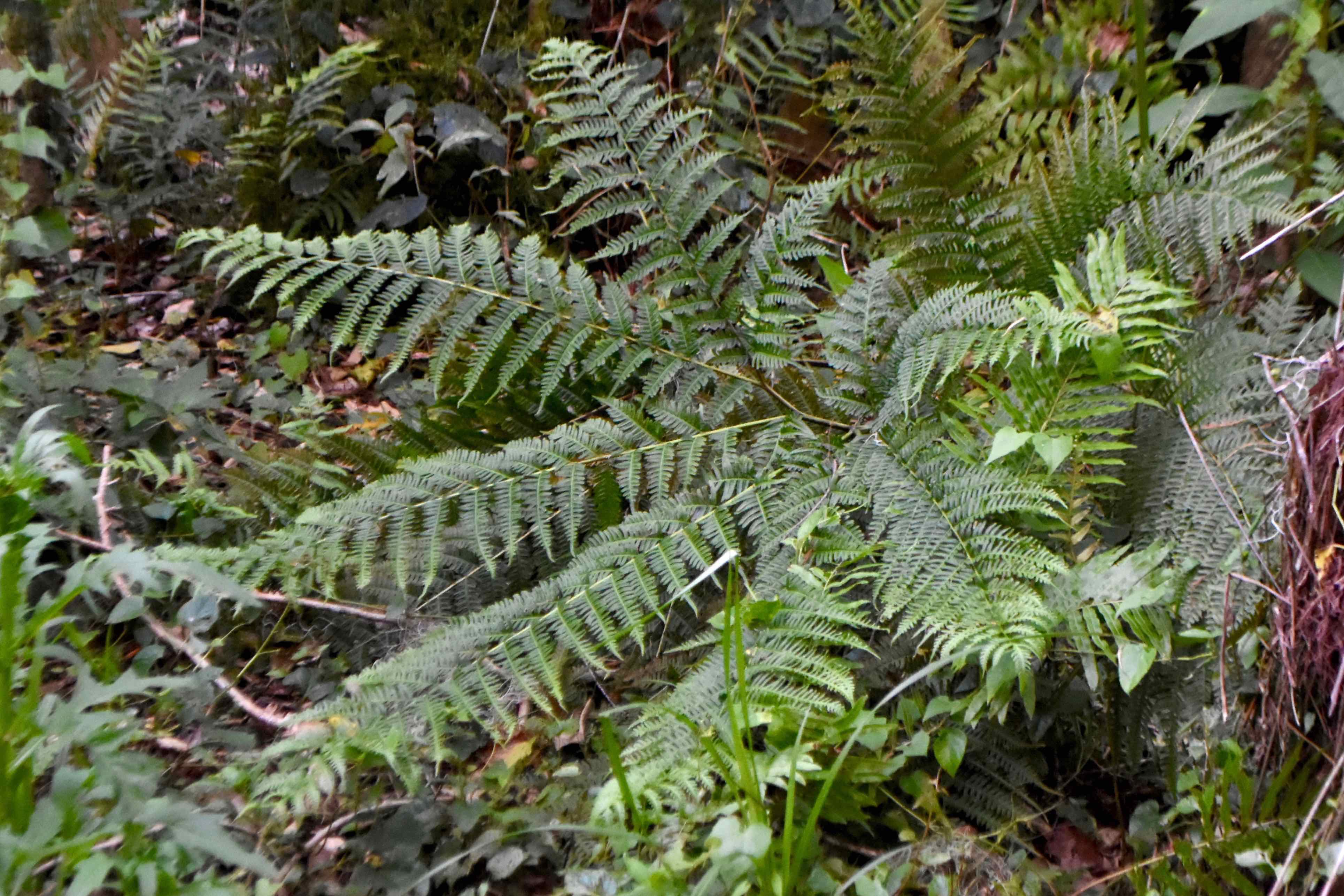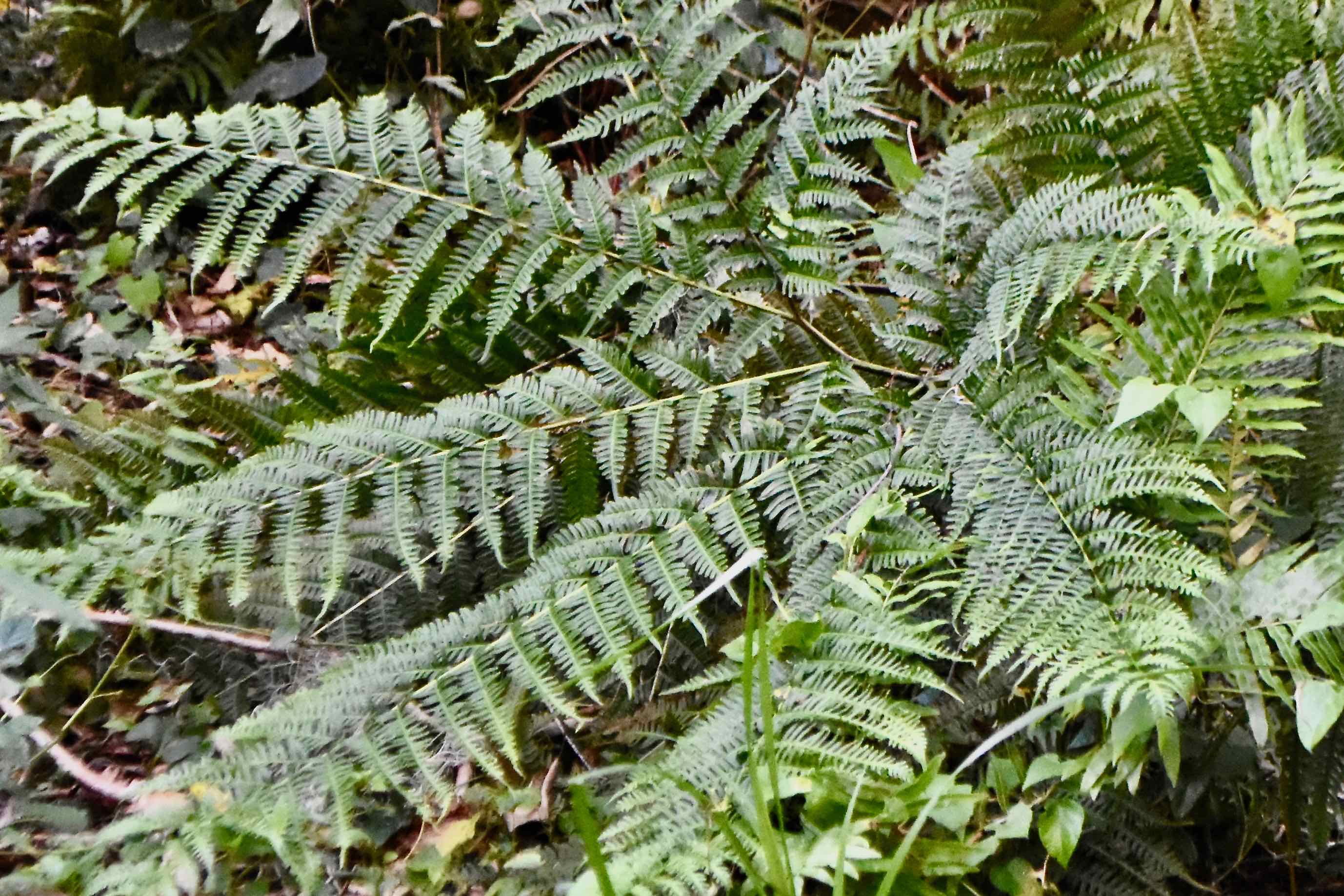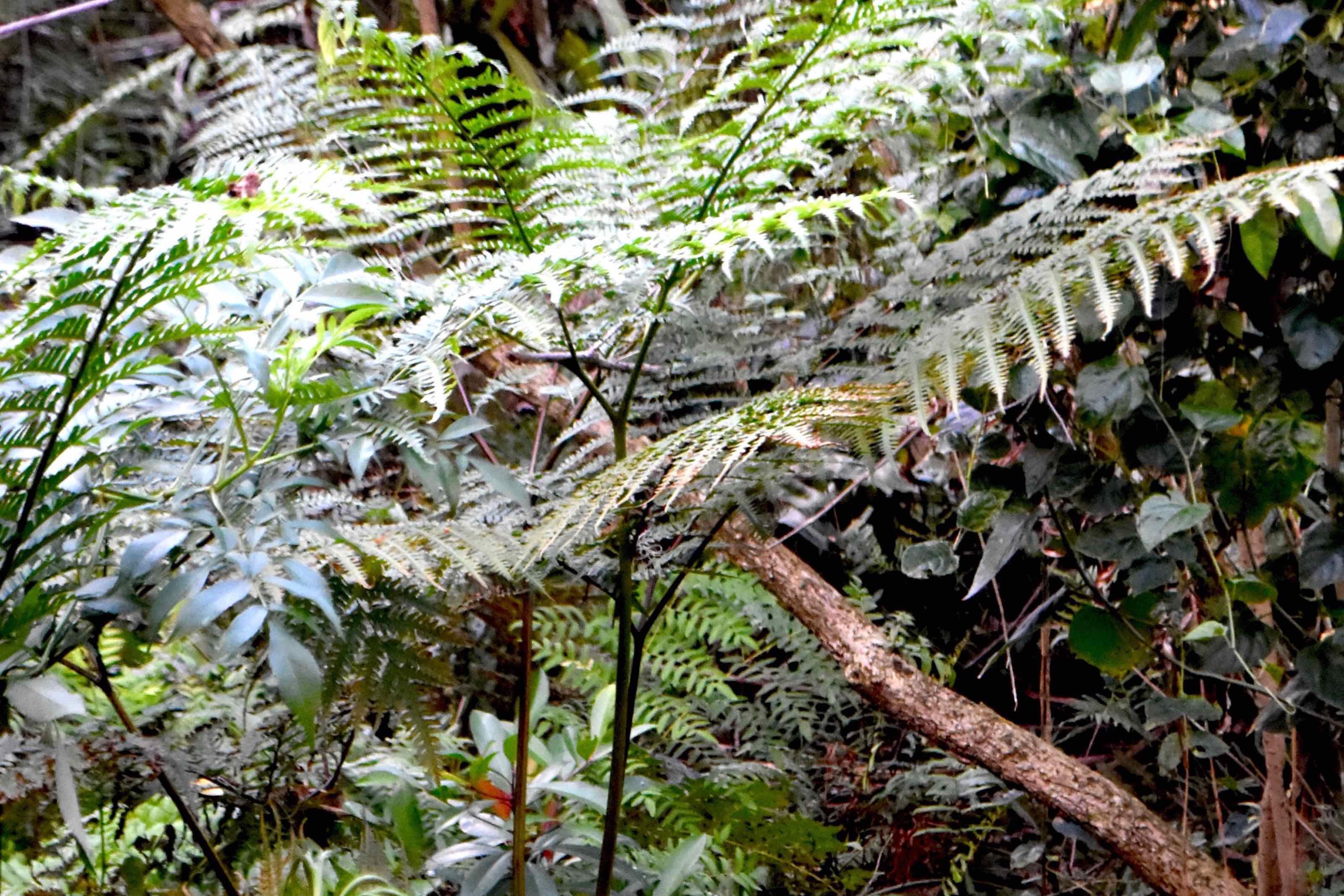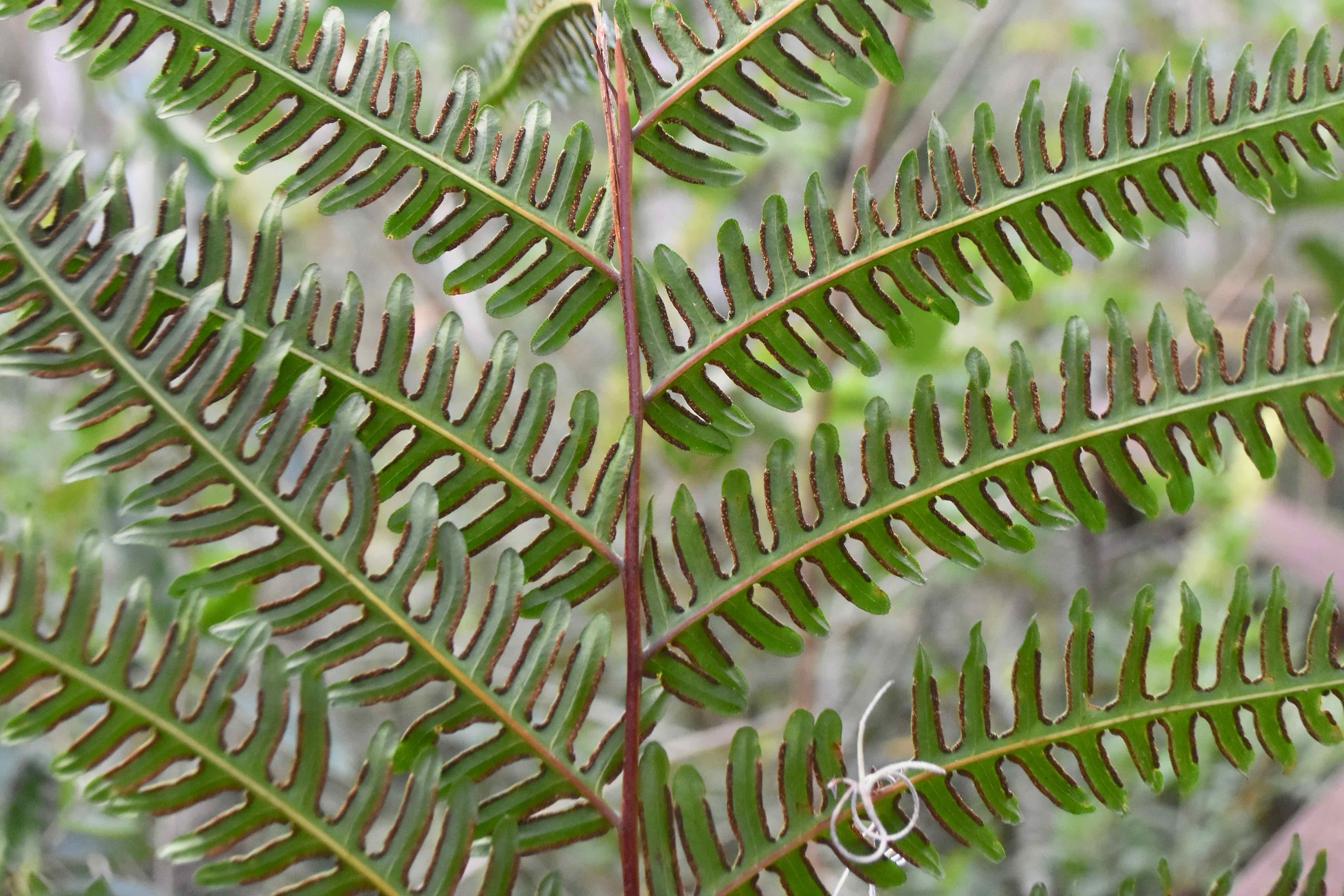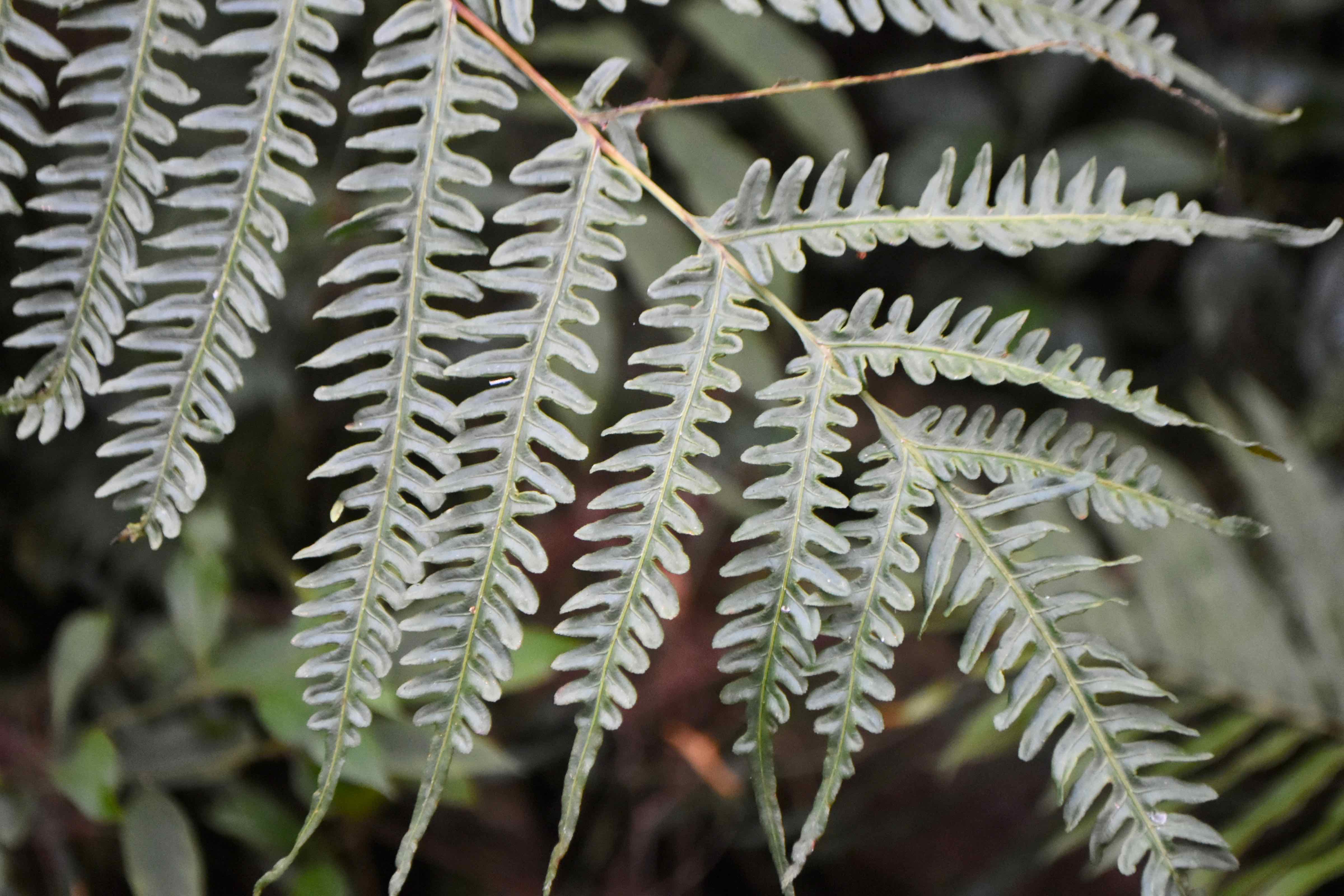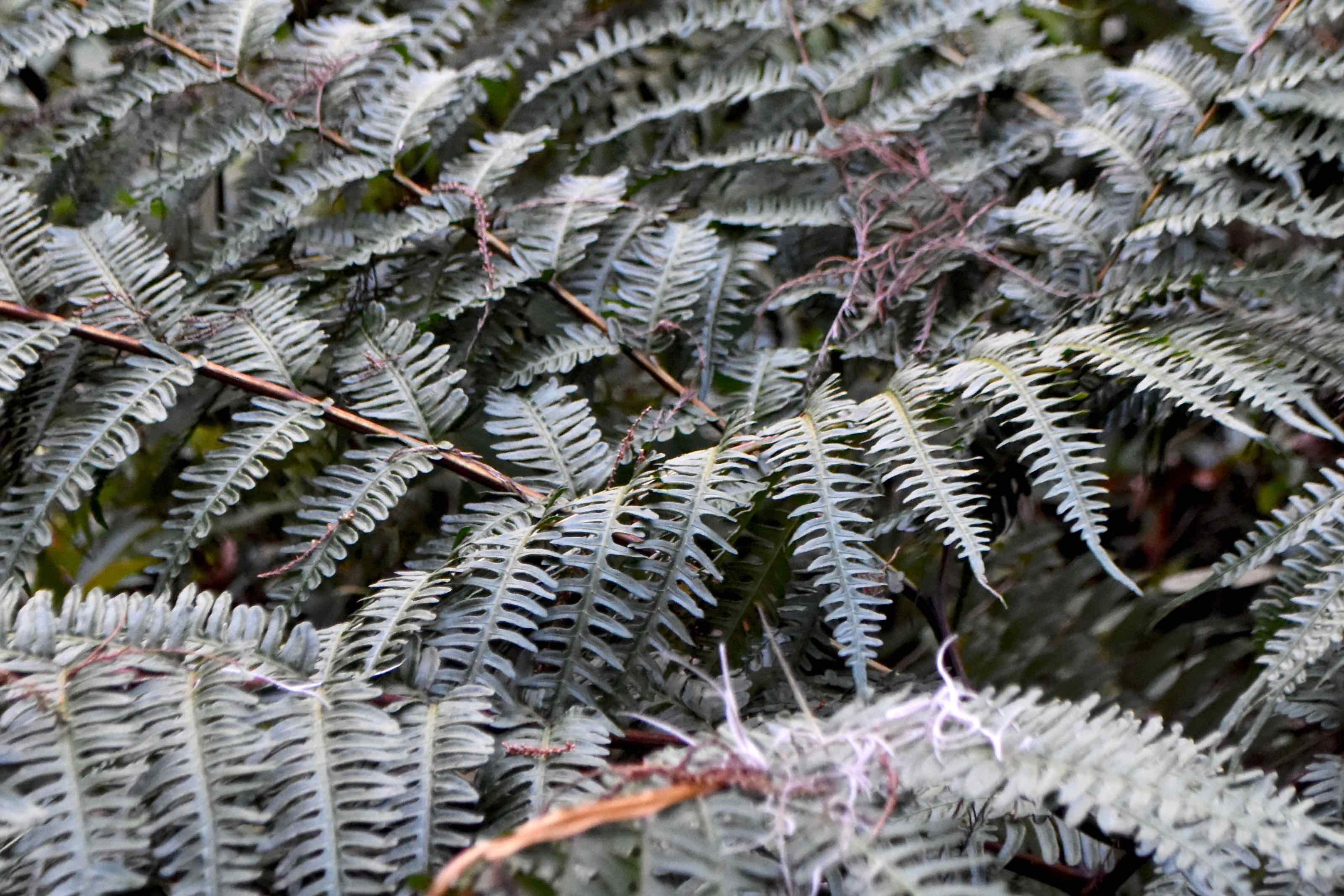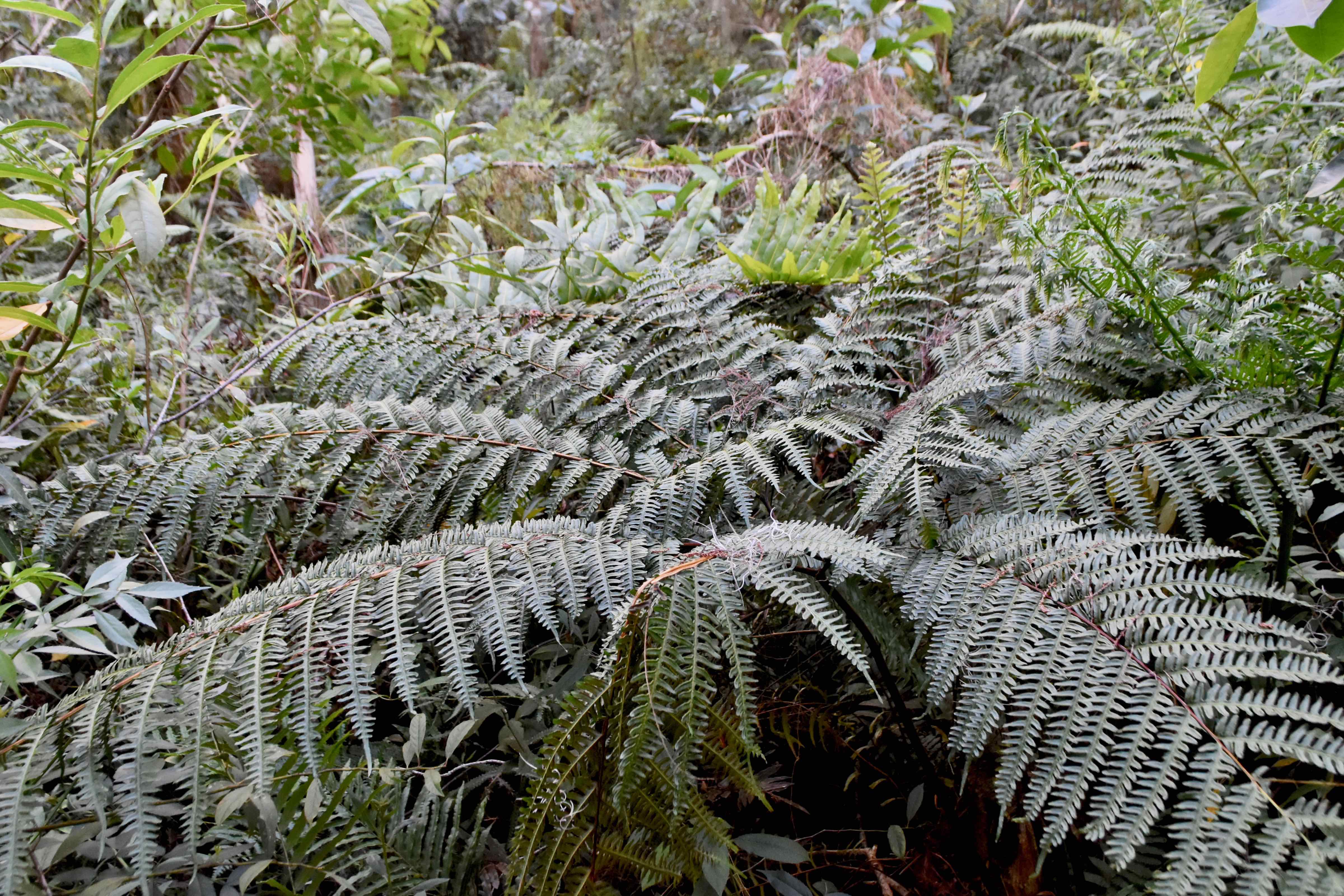
Tailed bracken fern, photographed at Loxahatchee National Wildlife Refuge, Boynton Beach, Palm Beach County, in March 2017.
Bracken fern, Pteridium aquilinum, is perhaps the most widespread plant on the planet, found everywhere except the most extreme of climates. It's also the most abundant of all ferns.
And its importance to us humans can't be understated. In different times and places, bracken fern has been a source of food, medicine and shelter, and valued enough to be used almost like money. Plus a whole lot more.
Our guy here, tailed bracken fern, is one of two bracken subspecies, or varieties found in South Florida. It's scientifically known as P. aquilinum var. pseudocaudatum and it is a Florida native found just about everywhere in the state. It's also native to much of the eastern and central United States as far north as New England and as far west as Kansas, Oklahoma and Texas.
Bracken fern vaguely resembles an umbrella. Well, maybe two-thirds of an umbrella. The plant has a single erect woody stem off of which radiates branches and fronds roughly like the spokes of an umbrella would. But a closer look revewals that the branches and fronds don't form a full circle. Sort of like that commercial some years ago with the guy who is selling part of an umbrella.
Tailed bracken fern stands about three or four feet tall and can be quite broad. It can form dense patches, as rhizomes, or creeping underground stems, send up new plants. In fact, tailed bracken can be quite aggressive. The rhizomes also are fire resistant and enable the plant to recover quickly when a fire does break out. Like all ferns, tailed bracken fern also reproduces by spores. It is a perennial, though in colder climes, it will die back to the ground in winter, sending out new shoots, called fiddleheads in spring. It prefers sunlight to shade, likes moist soils but tolerates some drought. In Florida, it's found in pinelands and moist forests.
By some counts, there are as many as five subspecies of P. aquiinum. By others, there are two. Some question whether it is just one species, but the consensus for now is singular. As we noted above, there are two varieties in South Florida, the other being lacy bracken fern (P. aquilinum caudatum). One variety of bracken fern or another can be found in every part of North America.
Bracken fern is widely used as a vegetable, particularly the fiddleheads. Native Americans ate the rhizomes, processing them into a flour. They also made medicines from it to cure everything from stomach ache to headache, cancer, tuberculosis and baldness. In Norway and Siberia, it's been used to make beers and ales that are said to have medicinal qualities. Thing is, the plant also contains poisons, including thiaminase, prunasin and ptaquiloside. Thiaminase, the major toxin, destroys thiamine, one of the B vitamins, in the body.
In Europe, it was burned as a source of potash and used to make glass and soap; Its antiseptic qualities were used to preserve wine and other foods. During the Middle Ages, it was so valued that it became a form of money. And now, it's being studied as a potential biofuel. At the same time, it can be a pain in the butt for farmers and anyone who raises animals. It's toxic to livestock.
Other common names include: bracken, bracken fern, western bracken fern and western bracken. It is a member of Dennstaedtiaceae, a family of ferns.
Click on photo for larger image
Links for Tailed Bracken Fern

